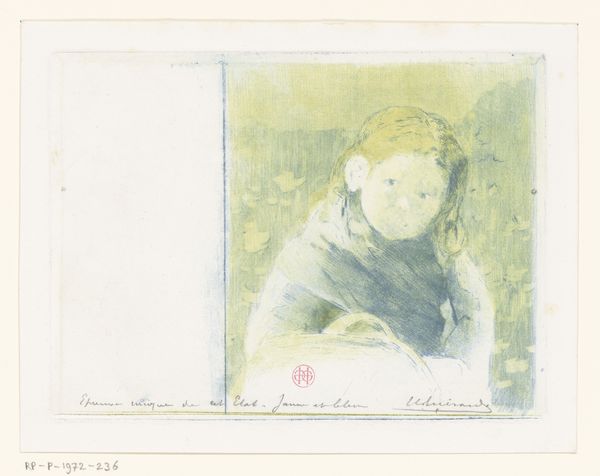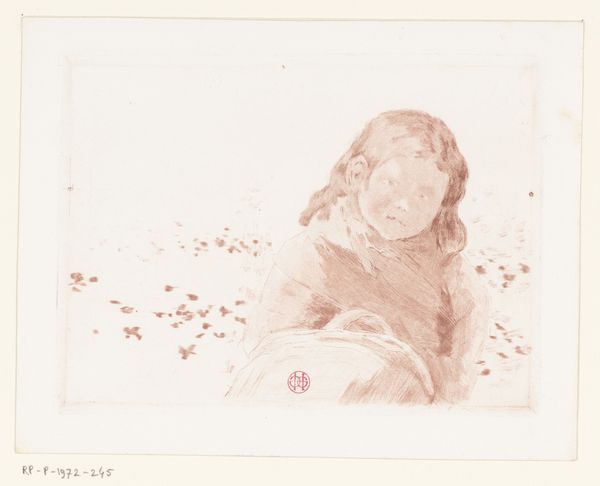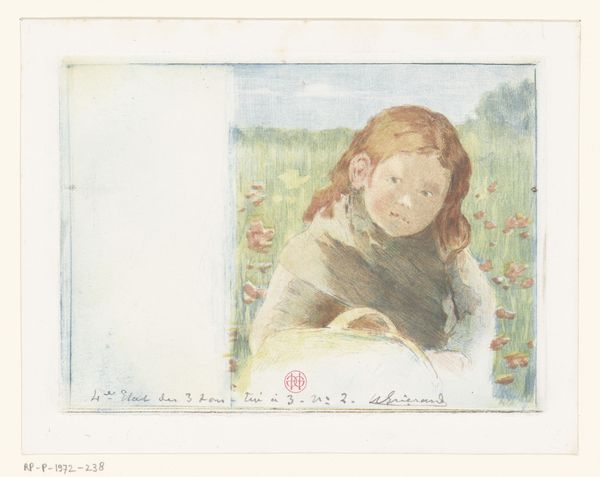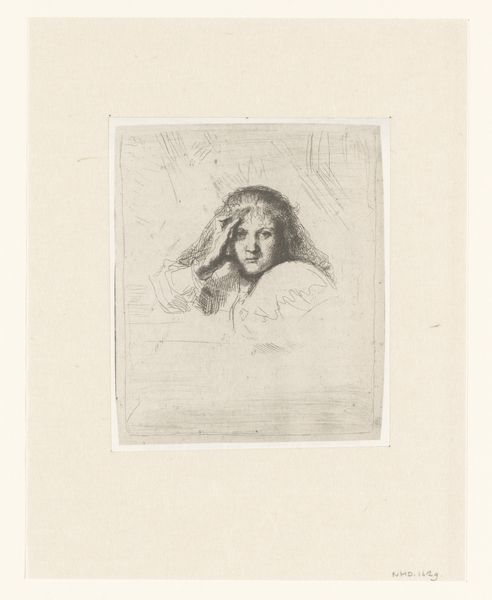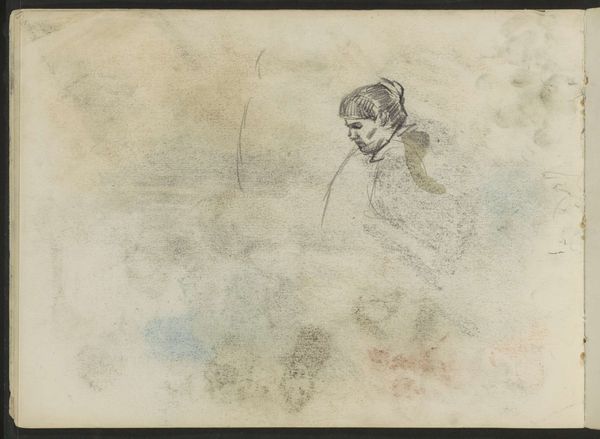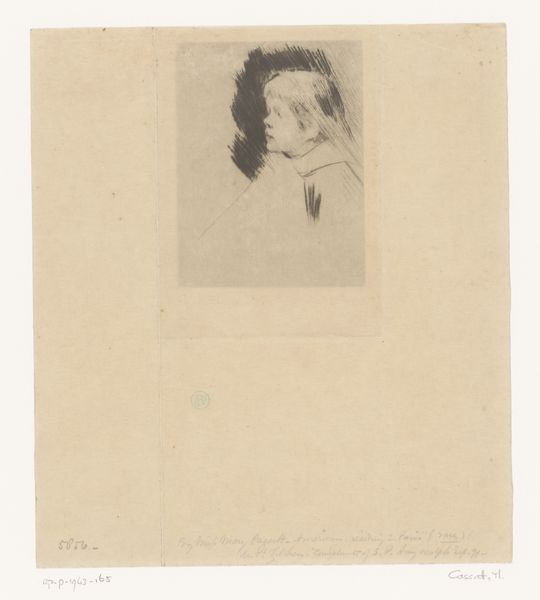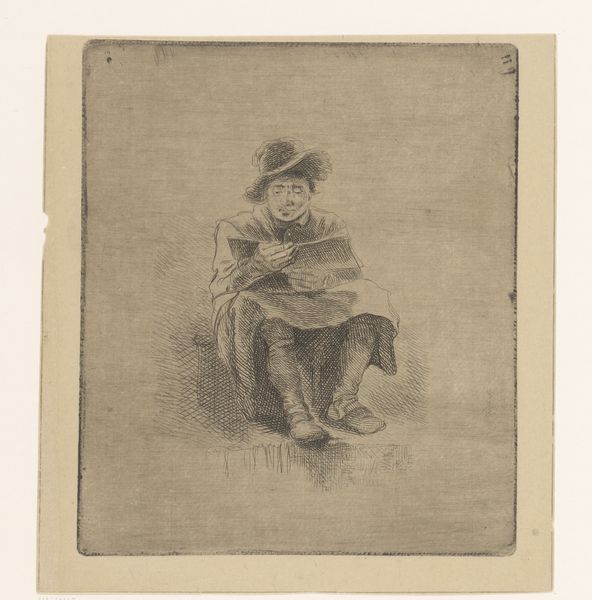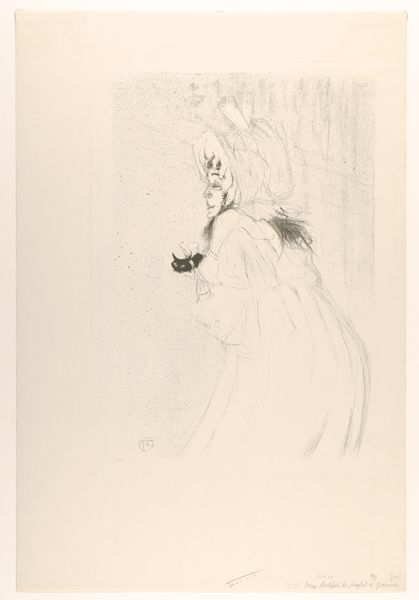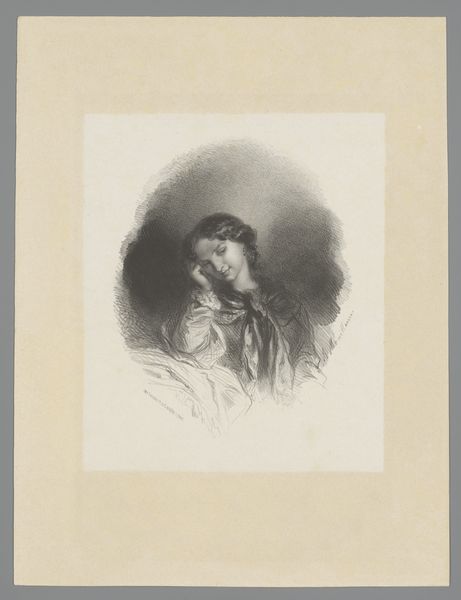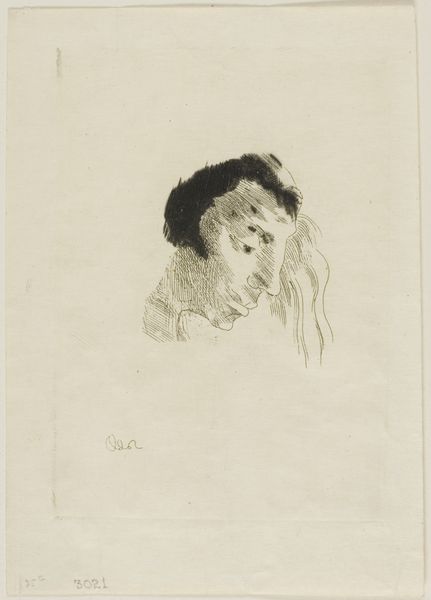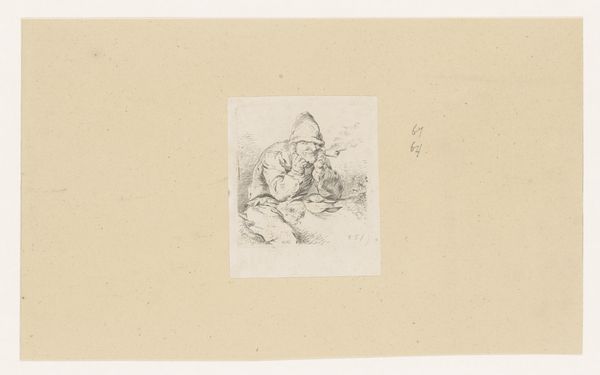
drawing, watercolor
#
portrait
#
drawing
#
water colours
#
impressionism
#
watercolor
#
watercolour illustration
#
watercolor
Dimensions: height 116 mm, width 158 mm
Copyright: Rijks Museum: Open Domain
Editor: This watercolor piece, "Meisje met mand in een bloemenweide," which roughly translates to "Girl with basket in a flower meadow", made by Henri-Charles Guérard sometime between 1856 and 1897 and housed at the Rijksmuseum, has such a tender quality. I'm particularly drawn to how soft and ephemeral it feels. How do you interpret this work? Curator: It’s interesting you mention tenderness. Looking at this through a historical lens, such depictions of children, especially those seemingly of a working-class background, gained prominence in the latter half of the 19th century. It reflects a burgeoning social consciousness. Do you think the choice of watercolour plays into this at all? Editor: Definitely, I feel like watercolor lends itself to portraying subjects with sensitivity! And a bit of vulnerability too... Curator: Exactly. Watercolor, unlike oil, was easier to transport. That also opens discussions around how such imagery was circulated—were these intended for private collections or a wider audience? Consider the politics of seeing – who gets to see, and how does that impact our understanding of the subject? Editor: That's something I had not even considered: who and how! Curator: Indeed! Think about how art became more public during this time. Impressionism itself broke away from academic salons. Images of everyday life, especially those of children, became tools to comment on broader social changes. Guérard, who was closely connected to the Impressionist circle, may be actively choosing to show her in this way as a socio-political statement. Editor: So the seeming gentleness of the image can actually be interpreted as a reflection on societal shifts and evolving ideas about children in art? Curator: Precisely! The seeming innocence and sensitivity may carry layered implications about viewership and class. Editor: Thanks. Now I can see a new layer of context and possible intent in an artwork that I previously only engaged with on an aesthetic level. Curator: Exploring the layers beneath the visible, considering who gets to look and how their views shape history… That’s the continuous journey.
Comments
No comments
Be the first to comment and join the conversation on the ultimate creative platform.
